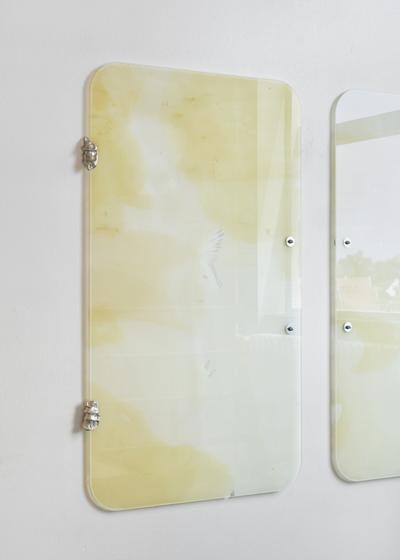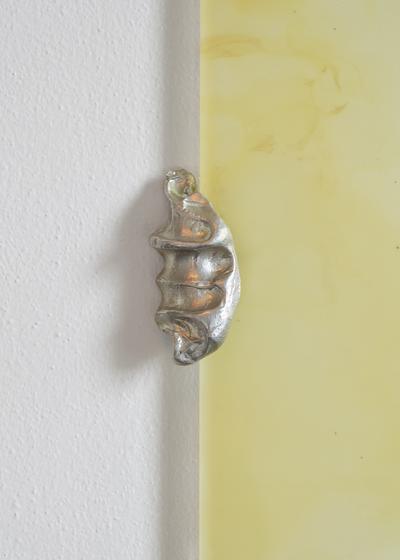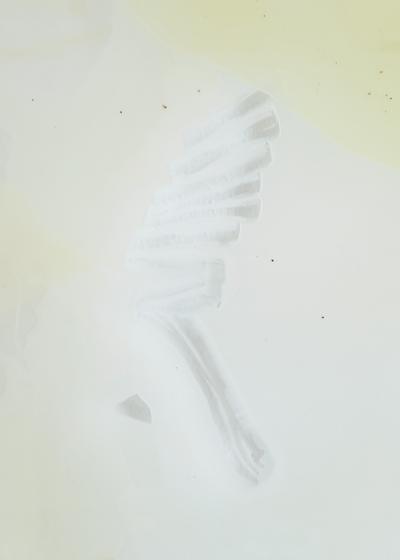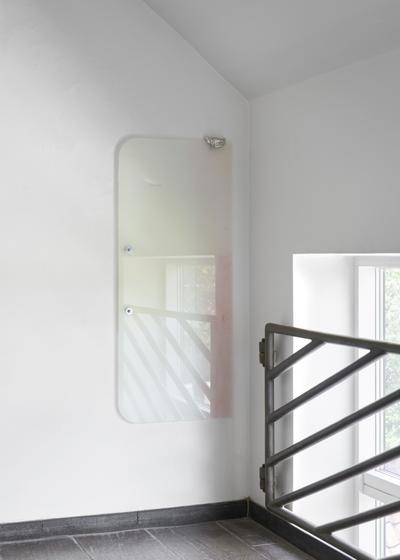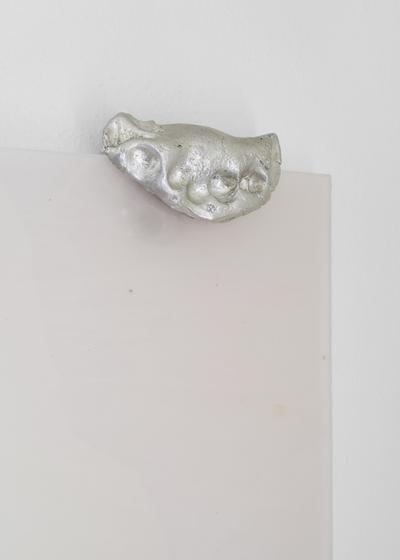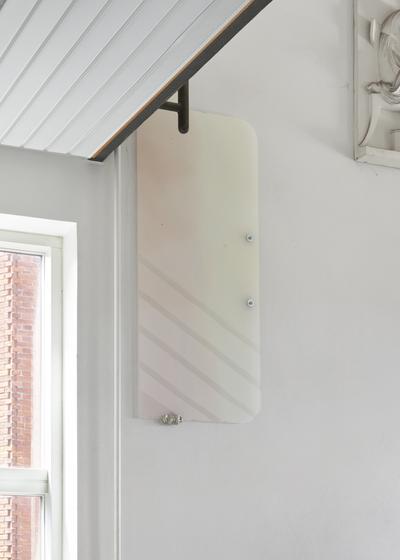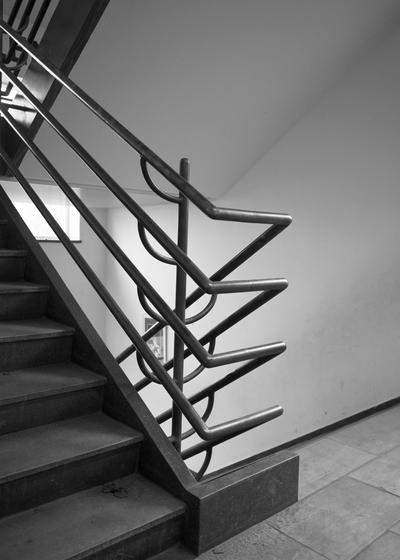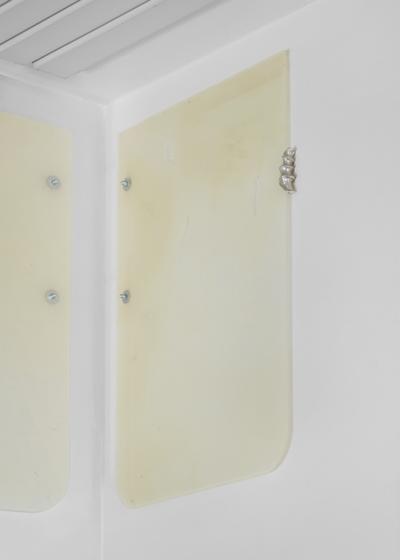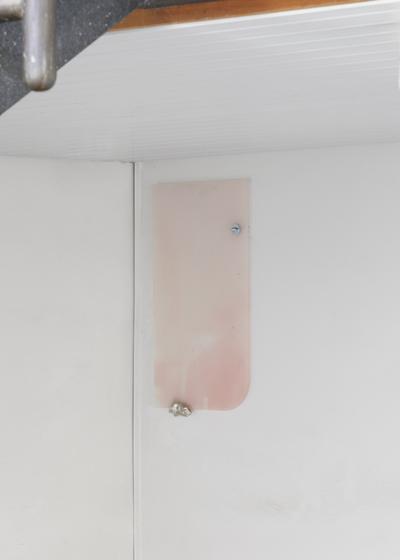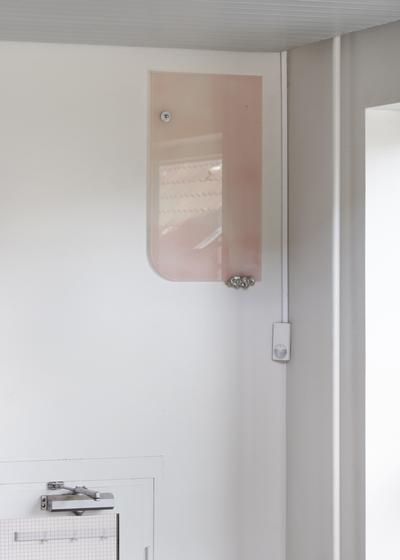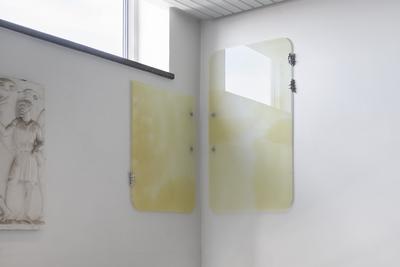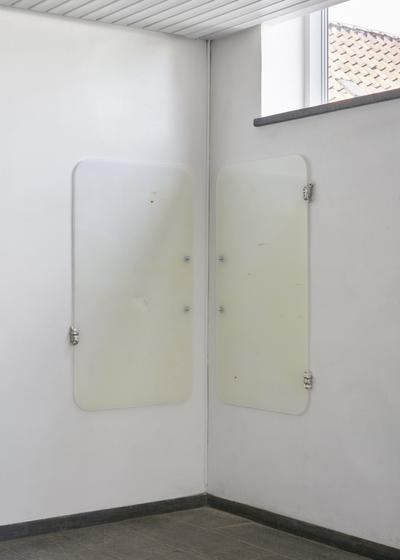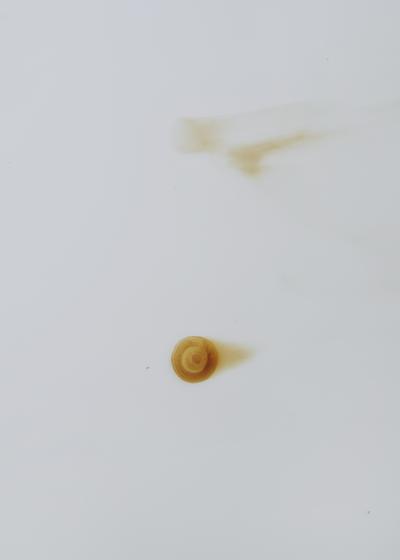Smelter sladder
@ Risingskolen, Odense, 2024.
Anne Marie Carl Nielsen's Program for Art in Public Spaces.
Drypper ind, 2024
Glas, bivoks, kridt, juice, skravering, tin.
To dele, 80x140 cm hver.
Holder huller, 2024
Glas, bivoks, sæbe, snavs, tin.
To dele, 80x100cm hver.
Spyt tunge trin, 2024
Glas, bivoks, pigment, hår, grus, tin.
To dele, 40x140 cm hver.
Smelter sladder, 2024.
Glas, bivoks, pigment, regn, støv, hvisken, tin.
To dele, 80x100 cm, 80x70 cm.
I lommer, 2024
Glas, bivoks, pigment, klister, grums, tin.
To dele, 40x60 cm hver.
Tegner tæt luft, 2024
Glas, bivoks, brændt bivoks, tyggegummi, skravering, tin.
To dele, 80x140cm hver.
The stairways in Risingskolen are regarded by Cecilie Skov to be the metaphorical spine of the building – architectural features that hold the community of children, staff, and parents, as well as the building’s structure, together. In this quiet stairway leading to the library, Skov has installed a series of six works made from glass, wax and tin, all materials that can be reduced to liquid form and which are, in varying states, hard, soft, fragile, and robust.
Hung flat against the wall, these works assume the character of screens and pages - touchscreens, notebooks, teaching boards, speech bubbles, or windows. They reference ancient Roman wooden tablets whose hollowed-out board was filled with wax and scratched upon to sketch or write ephemeral notes. The surface could be cleaned by melting and smoothing the wax, thus creating a ‘new page’ ready to be used again. This process is where the term ‘tabula rasa’, which translates in English as ‘clean slate’, originates from.
Throughout the staircase, the sculptures follow the contextual lines of the architecture: some elements are raised up to the ceiling while others are cut to accommodate a window. Tin brackets, moulded from the cast of handprints, assume the form of vertebrae and track the movement of the children’s bodies around the building, grasping onto the brass handrail as an anchor of sorts in the school’s everyday life.
Text by Jes Fernie.
Documentation by Brian Kure.
Kindly funded by Anne Marie Carl-Nielsens Legat, Billedhuggeren, professor Gottfred Eickhoff og hustrus, maleren Gerda Eickhoffs fond og Grosserer L. F. Foghts Fond.
